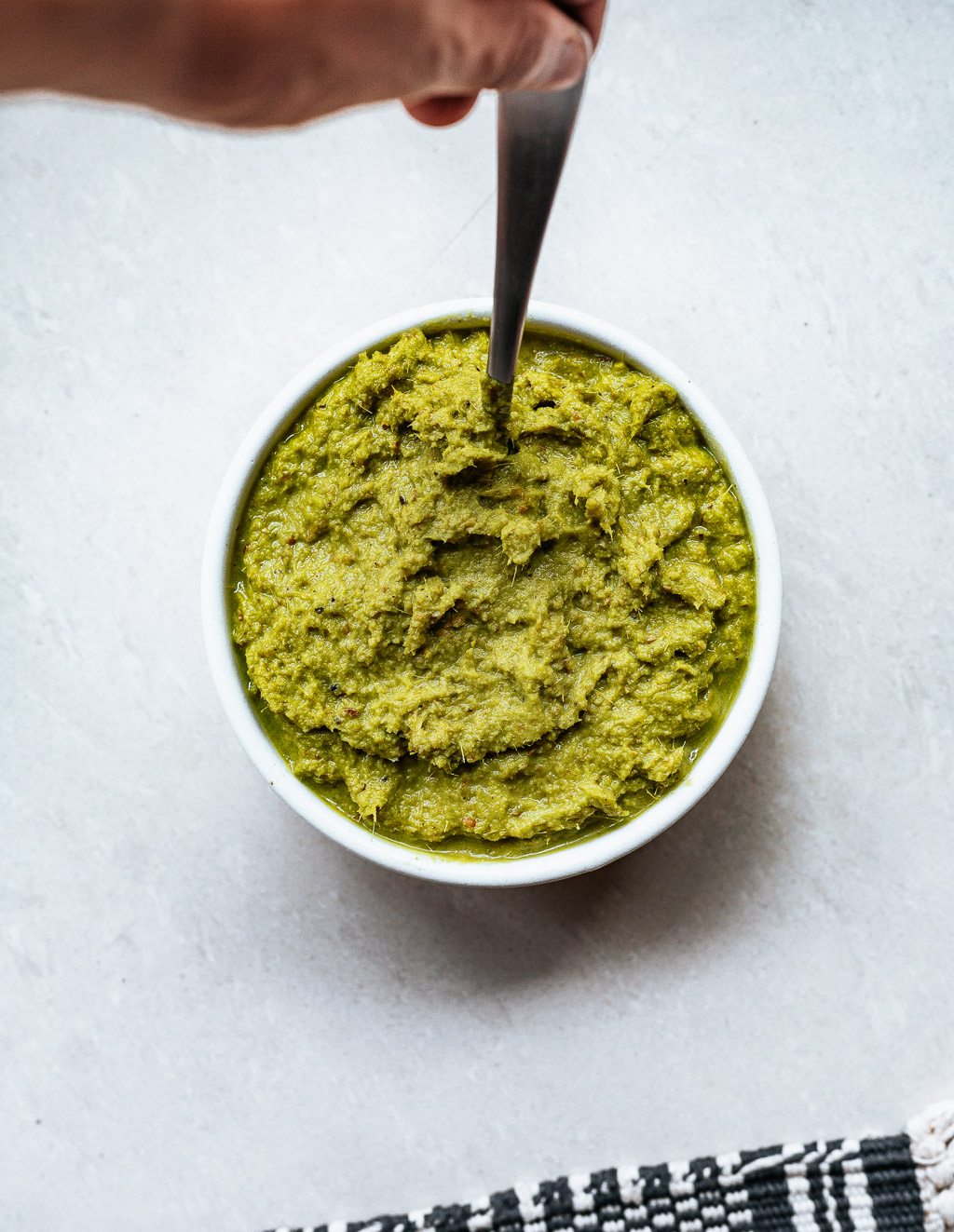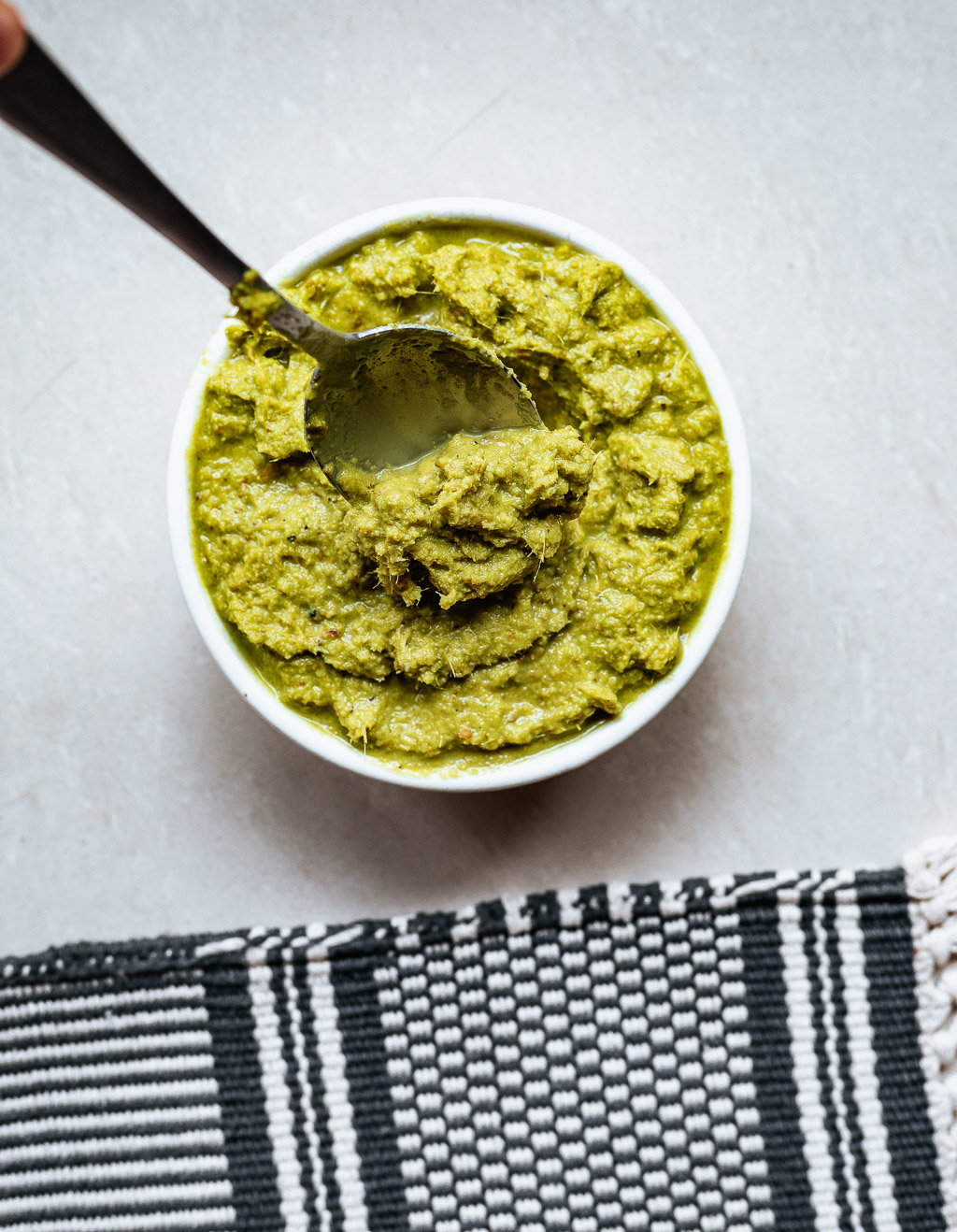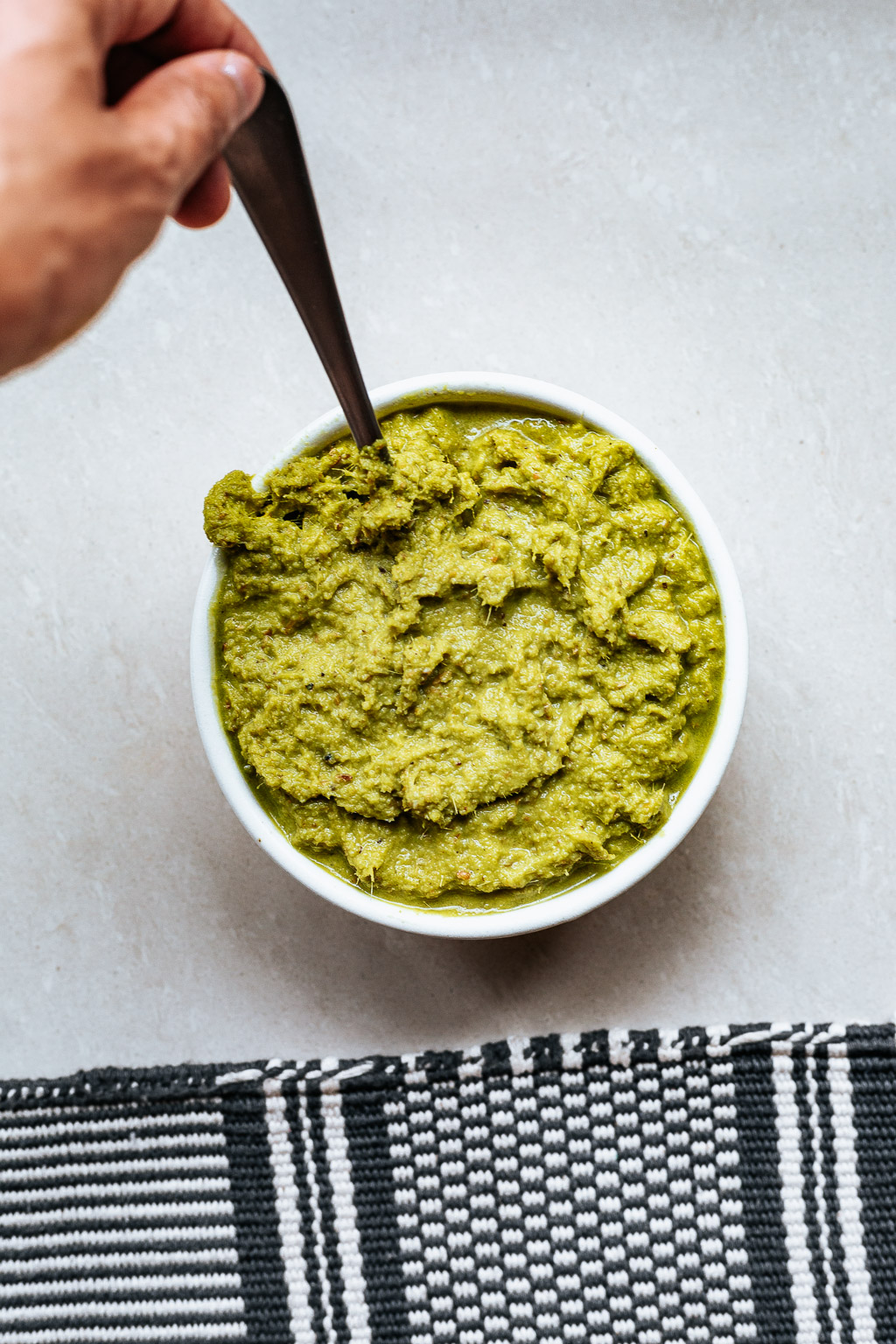

I already have a recipe for Thai curry paste on here. It’s one where I’ve used red chillies for heat and borrowed from the yellow and green pastes in terms of spiceage to make a kind of a hybrid orange version. I personally prefer a Thai red curry to its green counterpart, but that’s not to say that this is great in its own right; the red paste has more of a pronounced earthy flavour because of the dried chillies whereas this green chilli version is more fresh and zingy. Although the rest of the ingredients remain practically the same (the way that I make it anyway), the ratios are what make all the difference.
For reasons of frugality and non-availability of ingredients, I am always on the lookout for substitutes. One such: mango ginger in place of galangal. Although it’s not available year round, it’s so fresh and cheap when in season that I buy, peel and freeze to make curry pastes year round. Ever since the Rona though, with more online stores popping up, finding lemongrass and galangal have been surprisingly easy. But if that’s not the case for you and mango ginger is available where you live, definitely sub that in instead. Anyone eating it will be none the wiser.
As with any good curry, the real trick of course is first in the quality of your paste. But just as important is bringing out the flavour of the aromats in it: make sure you fry it in a fair bit of oil to get it slightly reduced and darkened before adding the coconut milk and other stuff. Frying the paste this way helps develop the flavour of the curry. You want to keep it going for a good 10-15 minutes over a medium heat until most of the moisture evaporates and the oil separates and forms a thin layer on top. Visually, it’ll look like it’s going to curdle. That’s your cue to add the rest of your meat, veg, coconut milk etc. Since all the ingredients that go into the paste are raw, if you skip this step and pour in the coconut milk directly, you’ll end up boiling the paste. It would be a shame to put so much effort into making your own paste and then not optimizing its flavour.
This recipe makes a huge batch—about 3 cups’ worth—but that’s the beauty of it. Make once, and you can eke out so many meals – curries, Thai curry fried rice, a marinade for meats or paneer/tofu, a dollop stirred into a blah veg soup, your options are endless. Refrigerate what you foresee using in the near future and freeze the rest. It freezes and thaws really well, but make sure to do this in individual portions unless you enjoy hacking into a curry paste iceberg. Once thawed, don’t refreeze.

THAI GREEN CURRY PASTE
Ingredients
- 12 green chillies
- ¾ cup shallots (or onion)
- ¾ cup coriander roots and stems
- ½ cup lemongrass
- ½ cup galangal (see notes)
- ¼ cup oil
- 10 garlic cloves
- 4" piece of ginger
- 2 tbsp lime or lemon peel
- 1 ½ tbsp coriander seeds (or powder)
- 1 tbsp cumin seeds (or powder)
- 3 tsp salt
- 2 tsp sugar
- ¾ tsp turmeric powder
- 5 kaffir lime leaves/regular lime leaves (optional)
Instructions
- Prepping lemongrass: you’ll be using only about a bottom third of the lemongrass stalks here. Remove any tough outer layers and slice the tender white parts into rounds. (Retain the tops to make lemongrass tea.)
- Roughly peel and slice the ginger and galangal. Slice the outer layer of the lime or lemon for the peels. Wash the coriander roots and stems thoroughly to rid them of any mud.
- Add all the ingredients except the oil to a blender jar and blend to a smooth paste. (Note: using a food processor here will chop them to really fine bits and not make a smooth paste. You want to use a blender for the job.)
- Scrape down the sides and continue blending with a little bit of oil at a time to get a smooth paste. If your paste still looks too thick and is sticking to the blades, add up to ¼ cup of water to help it along.
- Storing in the fridge: decant into jars and pour a thin layer of oil to fully cover the top. Refrigerate for up to a week.
- Freezing: transfer to containers or ziplock bags and freeze. Do this in your preferred portion sizes so you can thaw them individually. Once thawed, don’t refreeze.



Leave a Reply